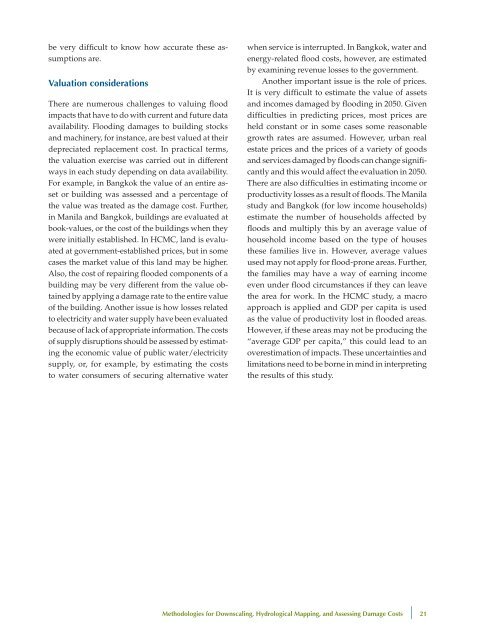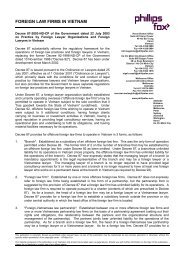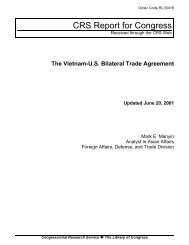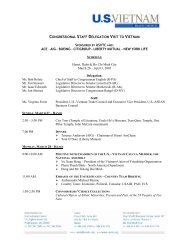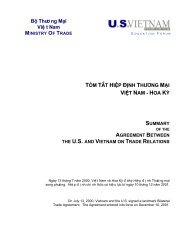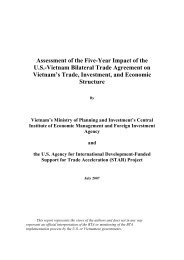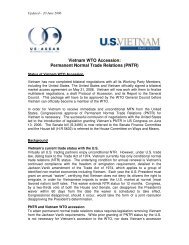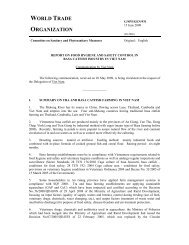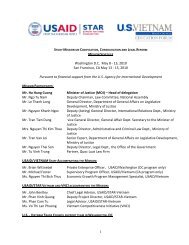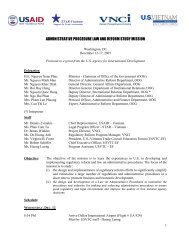Climate risks and adaptation in Asian coastal megacities: A synthesis
Climate risks and adaptation in Asian coastal megacities: A synthesis
Climate risks and adaptation in Asian coastal megacities: A synthesis
- No tags were found...
Create successful ePaper yourself
Turn your PDF publications into a flip-book with our unique Google optimized e-Paper software.
e very difficult to know how accurate these assumptionsare.Valuation considerationsThere are numerous challenges to valu<strong>in</strong>g floodimpacts that have to do with current <strong>and</strong> future dataavailability. Flood<strong>in</strong>g damages to build<strong>in</strong>g stocks<strong>and</strong> mach<strong>in</strong>ery, for <strong>in</strong>stance, are best valued at theirdepreciated replacement cost. In practical terms,the valuation exercise was carried out <strong>in</strong> differentways <strong>in</strong> each study depend<strong>in</strong>g on data availability.For example, <strong>in</strong> Bangkok the value of an entire assetor build<strong>in</strong>g was assessed <strong>and</strong> a percentage ofthe value was treated as the damage cost. Further,<strong>in</strong> Manila <strong>and</strong> Bangkok, build<strong>in</strong>gs are evaluated atbook-values, or the cost of the build<strong>in</strong>gs when theywere <strong>in</strong>itially established. In HCMC, l<strong>and</strong> is evaluatedat government-established prices, but <strong>in</strong> somecases the market value of this l<strong>and</strong> may be higher.Also, the cost of repair<strong>in</strong>g flooded components of abuild<strong>in</strong>g may be very different from the value obta<strong>in</strong>edby apply<strong>in</strong>g a damage rate to the entire valueof the build<strong>in</strong>g. Another issue is how losses relatedto electricity <strong>and</strong> water supply have been evaluatedbecause of lack of appropriate <strong>in</strong>formation. The costsof supply disruptions should be assessed by estimat<strong>in</strong>gthe economic value of public water/electricitysupply, or, for example, by estimat<strong>in</strong>g the coststo water consumers of secur<strong>in</strong>g alternative waterwhen service is <strong>in</strong>terrupted. In Bangkok, water <strong>and</strong>energy-related flood costs, however, are estimatedby exam<strong>in</strong><strong>in</strong>g revenue losses to the government.Another important issue is the role of prices.It is very difficult to estimate the value of assets<strong>and</strong> <strong>in</strong>comes damaged by flood<strong>in</strong>g <strong>in</strong> 2050. Givendifficulties <strong>in</strong> predict<strong>in</strong>g prices, most prices areheld constant or <strong>in</strong> some cases some reasonablegrowth rates are assumed. However, urban realestate prices <strong>and</strong> the prices of a variety of goods<strong>and</strong> services damaged by floods can change significantly<strong>and</strong> this would affect the evaluation <strong>in</strong> 2050.There are also difficulties <strong>in</strong> estimat<strong>in</strong>g <strong>in</strong>come orproductivity losses as a result of floods. The Manilastudy <strong>and</strong> Bangkok (for low <strong>in</strong>come households)estimate the number of households affected byfloods <strong>and</strong> multiply this by an average value ofhousehold <strong>in</strong>come based on the type of housesthese families live <strong>in</strong>. However, average valuesused may not apply for flood-prone areas. Further,the families may have a way of earn<strong>in</strong>g <strong>in</strong>comeeven under flood circumstances if they can leavethe area for work. In the HCMC study, a macroapproach is applied <strong>and</strong> GDP per capita is usedas the value of productivity lost <strong>in</strong> flooded areas.However, if these areas may not be produc<strong>in</strong>g the“average GDP per capita,” this could lead to anoverestimation of impacts. These uncerta<strong>in</strong>ties <strong>and</strong>limitations need to be borne <strong>in</strong> m<strong>in</strong>d <strong>in</strong> <strong>in</strong>terpret<strong>in</strong>gthe results of this study.Methodologies for Downscal<strong>in</strong>g, Hydrological Mapp<strong>in</strong>g, <strong>and</strong> Assess<strong>in</strong>g Damage Costs | 21


